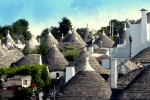A guided tour of the Natural History Museum of Pisa University and the social dinner in The Charterhouse of Calci, that is open to EICS 2011 participants and for their accompanying persons with the supplementary social dinner pass.

The Charterhouse of Calci was founded in 1366 as a ghotic building, even if it display currently a baroque style
due to reconstructions operated in the 18th century.
All the construction plans were laid out by the monks themselves, for they only knew exactly the organizational,
architectural and administrative needs of the chartusian life as it was intended by the Rule of S. Benedetto:
times and places shared by the community and places for silence and solitude.
The building was used by the monks until the 1972, when the last monk moved to the
Charterhouse of Farneta (Lucca).
After a long period of dereliction the whole structure was acquired by both the
University of Pisa and the Bureau of Natural, Architectural,
Artistic and Historical Estate of the Province of Pisa.
The Charterhouse is now open to the public: a walkpath through the main places of the building (the main curch,
the chapels, the refectory, the cells, the Granduca's appartment and the old pharmacy) shows a sample of the daily life
of the monk.
Inside the buildings that once hosted production activity (granaries, cellars, workshops, ecc.) the University of Pisa
has placed its Museum of Natural history.

The Natural History Museum of Pisa University originated in the "gallery" founded in 1591 by Ferdinando I de'
Medici, as an annex of the Botanical Garden
in Pisa.
This museum was subsequently divided into independent sections, because of the division of Natural History into
specialised fields of research, although it remained housed under the same roof.
In the following decades the Museum and the related research facilities expanded greatly; the collections were
continuosly enlarged by the addition of new specimens.
The museum was also used as a storage place for research material for the Faculty of Natural History at the University.
Some of the collections have to be mentioned for their high historical or didactic interest: the cetaceans, the
malacological collection, the mammals, the birds, the comparative anatomy collection, the minerals, the marbles and
the fossils.
The current Museum of Natural History was founded in 1981, merging the old Museums of Zoology and the collections of
comparative Anatomy, Mineralogy and Petrography, Geology and Paleontology. It was hosted in a portion of the Pisa
Charterhouse.
The new museum is intended as a place of research and didactic activities, well integrated into the historical
and artistic aspects of the monumental architecture of the Charterhouse.
On June 16th Pisa holds the Luminara festival, held for the patron saint's day (San Ranieri).
At sunset, all the lights along the Arno are dimmed and more than 10000 candles are lit, which makes for some spectacular sights from the Ponte di Mezzo.
Various activities are organized in the streets and the night ends with a big fireworks.









